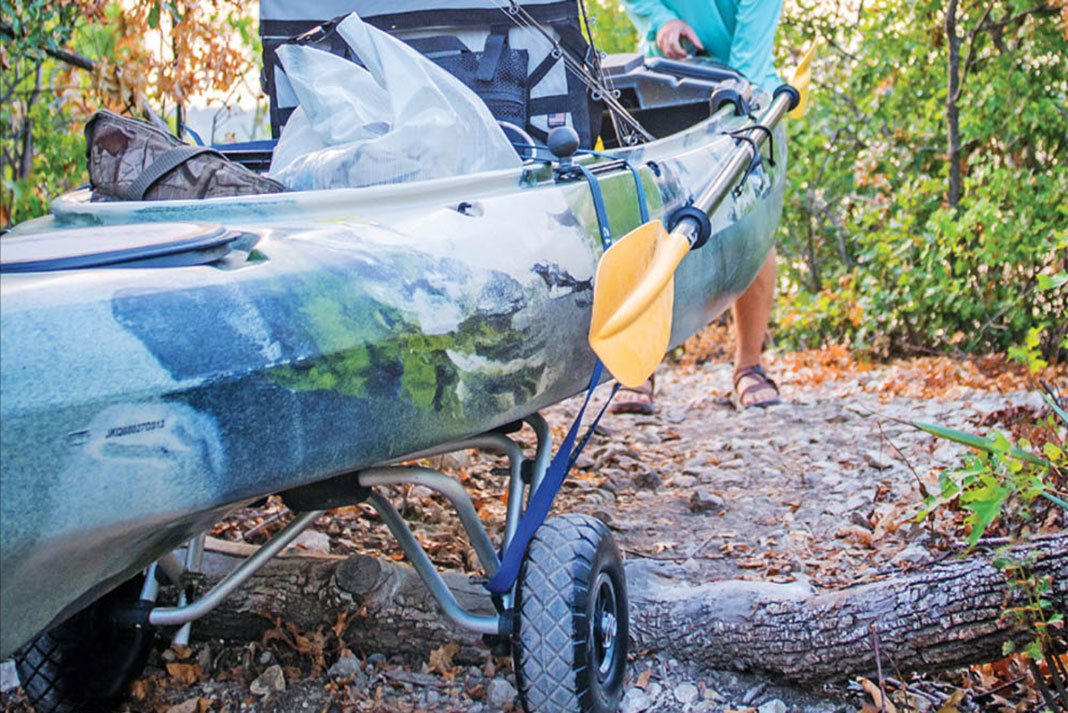The evolution of the kayak from a feather-light sealing baidarka to a Mad Max fishing chariot begged a means of getting it around. Our boats are beamy and heavy and a bitch to schlep from rack to water. To this end, a number of different kayak cart styles have evolved and vie for our attention.
Take Easy Street to the Launch with a Kayak Cart
I prefer a cradle style, center-mount cart. No scupper carts for me. The bias reflects my concern with damaging a scupper. I once paddled off the remote tip of Cape Scott with a boat gradually filling with water because of a structural leak. Use a scupper cart with care and you should be fine, but who treats their fishing kayak with care?

A kayak cart can weigh anywhere from seven to 17 pounds. A lighter unit will pull easier over obstacles, and many smaller units can even be stowed aboard, but there is something to be said for full size, heavy-duty models. Look for a cart built out of lightweight aluminum of hard plastic with quality hardware and fewer moving parts. Just because a manufacturer’s specs say the cart can handle 100 pounds doesn’t mean it will carry the kitchen sink. Use this rule of thumb: the greater the capacity, the tougher the cart.
Wheels and tires get a lot of buzz. When it comes to looking for performance wheels—for a fluid roll over the roughest and softest ground—pneumatic wheels are the benchmark. Wider tires will make easy work of sand while narrower tires will pull easier and take up less room in the car trunk. At the other end of the spectrum is protection—hard plastic or foam-filled tires will last for generations. For anglers exploring distant waters, the thought of a disabling puncture is enough to make their decision.
If you regularly traverse narrow trails, woods or dense brush, consider the overall width of the cart. A wide base creates a more stable platform but is more difficult to negotiate narrow passages.
No matter the style of cart, it should roll easily and hold your load securely. Today’s fishing kayaks are too big and heavy to drag around. Load your kayak on a high-quality cart and you’ll never look back.
Rob Lyon is an adventure journalist and author from San Juan Islands, Washington. He is never ashamed to take the easy street.
Large pneumatic tires roll over obstacles and across soft sand. | Feature photo: Dustin Doskocil









